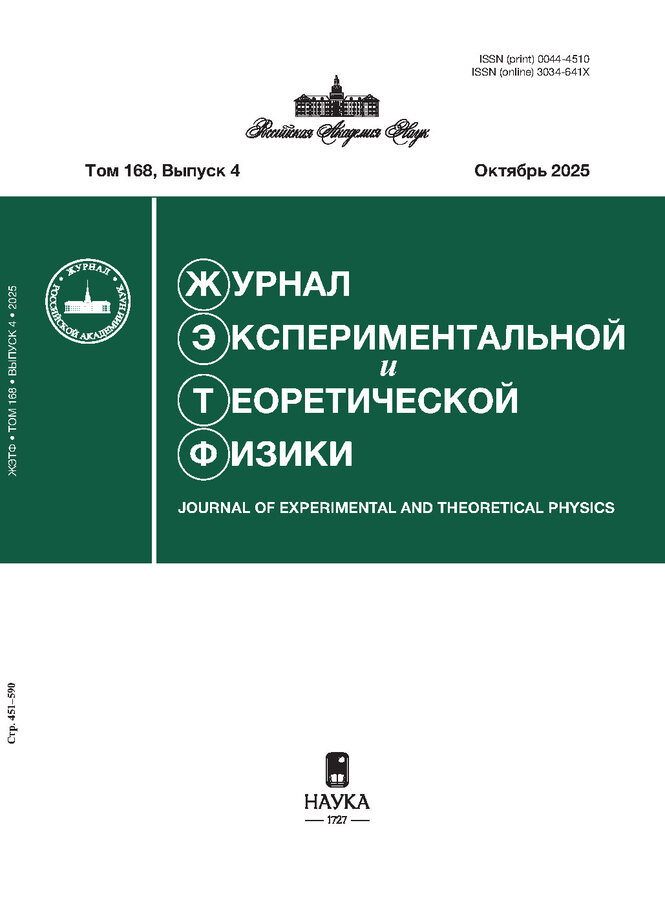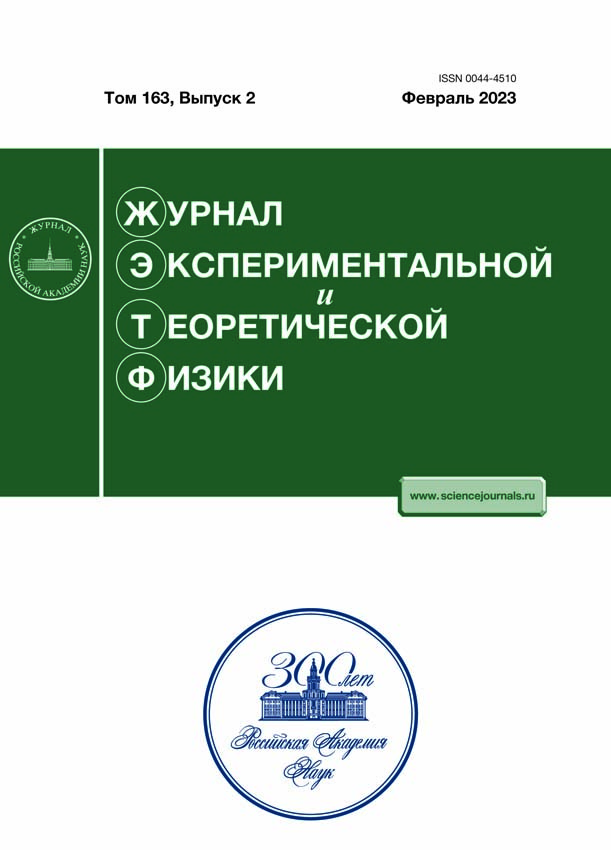К задаче о связанном состоянии электрона и дырки в дихалькогенидах переходных металлов
- Авторы: Крачков П.А1, Терехов И.С1
-
Учреждения:
- Институт ядерной физики им. Г.И. Будкера Сибирского отделения Российской академии наук
- Выпуск: Том 163, № 2 (2023)
- Страницы: 227-237
- Раздел: Статьи
- URL: https://ruspoj.com/0044-4510/article/view/653566
- DOI: https://doi.org/10.31857/S0044451023020098
- EDN: https://elibrary.ru/OQSTQJ
- ID: 653566
Цитировать
Полный текст
Аннотация
Рассмотрены взаимодействующие электрон и дырка в дихалькогенидах переходных металлов. Для исследования взаимодействия было получено уравнение Бете - Солпитера в ведущем порядке по потенциалу взаимодействия. Показано, что поведение потенциала на малых расстояниях существенно влияет на значения энергий связи электрона и дырки. Получено, что разложение уравнения Бете - Солпитера при малой константе связи не содержит сингулярных операторов. Поэтому энергия связи электрона и дырки не содержит параметра регуляризации. Используя теорию возмущений по константе связи, мы аналитически рассчитали энергии основного и первого возбужденного состояний. Для произвольных значений константы связи численно получены энергии связанных состояний электрона и дырки. Также численно найдены критические значения константы связи для кулоновского потенциала и для экспоненциально убывающего потенциала.
Об авторах
П. А Крачков
Институт ядерной физики им. Г.И. Будкера Сибирского отделения Российской академии наук
Email: p.a.krachkov@inp.nsk.su
630090, Novosibirsk, Russia
И. С Терехов
Институт ядерной физики им. Г.И. Будкера Сибирского отделения Российской академии наук
Автор, ответственный за переписку.
Email: i.s.terekhov@inp.nsk.su
630090, Novosibirsk, Russia
Список литературы
- K. S. Novoselov et al., Science 306, 666 (2004).
- Z. Y. Zhu, Y. C. Cheng, and U. Schwingenschl¨ogl, Phys. Rev. B 84, 153402 (2011).
- A. S. Rodin and A. H. Castro Neto, Phys. Rev. B 88, 195437 (2013).
- J. Zhou, W.-Y. Shan, W. Yao, and D. Xiao, Phys. Rev. Lett. 115, 166803 (2015).
- M. Trushin, M. O. Goerbig, and W. Belzig, Phys. Rev. B 94, 041301(R) (2016).
- M. Trushin, M. O. Goerbig, and W. Belzig, Phys. Rev. Lett. 120, 187401 (2018).
- M. Trushin, Phys. Rev. B 99, 205307 (2019).
- B. Scharf, D. V. Tuan, I. Zutic, and H. Dery, J. Phys.: Condens. Matter 31, 203001 (2019).
- N. V. Leppenen, L. E. Golub, and E. L. Ivchenko, Phys. Rev. B 102, 155305 (2020).
- M. F. C. Martins Quintela, J. C. G. Henriques, N. M. R. Peres, Phys. Stat. Sol. B, 2200097 (2022).
- В.Б. Берестецкий, Е.М. Лифшиц, Л.П. Питаевский, Квантовая электродинамика, Наука, Москва (1984).
- C. Itzykson, and J.-B. Zuber, Quantum eld theory, McGraw-Hill (1980).
- G. F. Glinskii and Zl. Koinov, Theor. Math. Phys. 70, 252 (1987).
- D. Xiao, G.-B. Liu, W. Feng, X. Xu, and W. Yao, Phys. Rev. Lett. 108, 196802 (2012).
- A. Chernikov, T. C. Berkelbach, H. M. Hill et al., Phys. Rev. Lett. 113, 076802 (2014).
- K. He, N. Kumar, L. Zhao, Z. Wang, K. F. Mak, H. Zhao, and J. Shan, Phys. Rev. Lett. 113, 026803 (2014).
- А. И. Ахиейзер, В. Б. Берестецкий, Квантовая электродинамика, Наука, Москва (1981).
Дополнительные файлы











